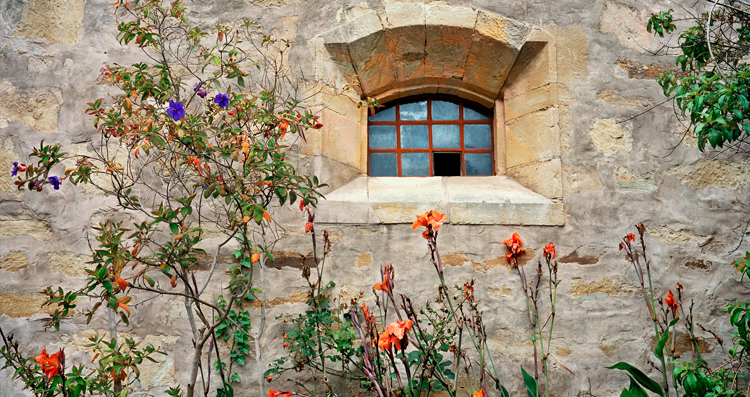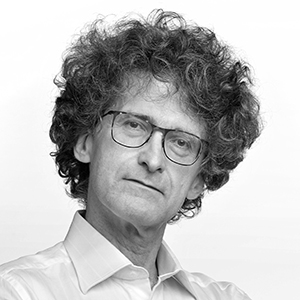Program Notes by Charlotte Nediger
Vienna has long been a centre of European musical culture. One thinks of Haydn, Mozart, Beethoven, Schubert, the Strausses, Brahms, Bruckner, Mahler, Schönberg, Webern, and Berg. Visitors to the city continue to enjoy the rich concert and opera offerings now, as they have done for 250 years. But ask a concertgoer about the musical life of Vienna prior to the era of Haydn and Mozart, and most draw a blank — as do many musicians! And yet Vienna experienced a real flowering of music in the baroque era, and we explore some of the fruits of that abundance in this week’s concerts.
Artistic life in baroque Austria revolved around the imperial court. The Hapsburgs went to great lengths to ensure a climate at court in which the arts in general, and music in particular, flourished. With the ascension of Ferdinand II in 1619 the court was moved to Vienna and all artistic activity focused there. A well-informed and ardent patron of music, Frederick II had a particular interest in the new music being practised in Italy, where musicians were experimenting with the radical idea that direct expression and virtuosity were more important than form. Court agents travelled to Italy to act as talent scouts, bringing back the brightest and best, and to purchase instruments and musical scores. Ferdinand also sent his native musicians to Italy to learn the new style. Vienna’s reputation as an international centre of musical culture was quickly established.
In curating the program for this week’s concerts, Elisa Citterio offers us a representation of this flowering of music in Vienna. Starting with just a few performers playing music imported from Italy, the stage gradually fills, and the music of native Austrian composers starts to dominate. Between each piece in the first half of the concert, various musicians try their hand at the art of improvisation, so commonly practised at the time. The 17th-century composers represented here were renowned as much, if not more, for their playing as for their compositions. They would undoubtedly have been brilliant improvisers, and that sense of flexibility and daring is evident in their notated solo works.
The Empress Eleonora I, of the Mantuan House of Ganzago, was influential in the employ of the Mantuan violinists Carlo Farina and Giovanni Battista Buonamente. Buonamente is thought to have accompanied her to Vienna in 1622 on the occasion of her wedding to Ferdinand II, and returned a few years later as a court musician. Farina had previously worked in northern Europe at the court of Dresden, but was in the service of Eleonora in Vienna at the end of his life.
The Veronese violinist Antonio Bertali joined the Viennese court in 1624, at the age of just 19, and remained there until his death 45 years later. In biographies he is usually described as an Austrian composer, but his style remains firmly rooted in Italy, as evidenced in the wonderful Ciaccona for solo violin and continuo.
Heinrich Biber is the first non-Italian we encounter in this concert: of Bohemian birth, born in Wartenberg (now Stráz pod Ralskem), the Austrians claim his as one of their own. He spent most of his career in Salzburg. Although not employed at the imperial court, he performed for the Leopold I on several occasions, and was raised to the noble rank of knight. Arguably the most esteemed violin virtuoso of his generation, both his playing and his compositions would have been well known in Vienna. We represent him here, not with one of his famous violin sonatas, but with one of his many ensemble works, specifically one of his Balletti Lamentabili.The writing of laments was common in Austria, especially in the repertoire for solo lute and harpsichord. This ensemble lament opens with a solemn sonata, followed by a series of dances, and ends with a short movement entitled “Lamenti,” with a very rare indication at the time for the violin to play f, then ff, and finally fff (loud, very loud, and even louder), a musical depiction of wailing.
The Veronese organist Massimiliano Neri spent most of his career in Venice. He was in Vienna only briefly, for the wedding of Ferdinand III and Eleonora Gonzago (niece of Eleonora I), but made enough of an impression to be raised to the nobility by the Emperor, who presumably admired his music. It is possible that other visits to the court are unrecorded. The Sonata in 9 parts is one of several works by Neri scored for several choirs of instruments, in the Venetian tradition.
It is appropriate that the works by Muffat and Fux were both published in 1701. At the dawn of the 18th century we enter the age of orchestral music, and welcome the oboes and bassoon to the string ensemble. The opera enjoyed increasing popularity at the court, and the opera required an orchestra. The emperors were determined to have one of the best orchestras in Europe, and demanded a high standard of both discipline and virtuosity. Orchestral music independent of the opera came to be a regular feature of court entertainment.
Georg Muffat was not an official court composer, though he had close connections: he enjoyed the emperor’s patronage, and three of his sons gained positions at court. Muffat was born in Savoy, and lived variously in Bavaria, Vienna, and Prague before taking up appointments in Salzburg and then Passau. Muffat was an organist, but was more renowned as a composer than performer. He famously spent time in Paris studying the French style of Lully, and in Rome studying the Italian style of Corelli, and included prefaces to his publications of orchestral music detailing what he had learned. He published the prefaces in German, Latin, French, and Italian, clearly wanting their influence to be widespread. He may not have imagined that musicians 300 years later would learn as much if not more from these writings as his contemporaries.
Muffat’s Ciaccona from his concerto Propita sydera owes much to the style of Lully, as do the orchestral suites of Johann Joseph Fux, though it is quite likely that Fux’s knowledge of the style owed much in turn to Muffat. The only truly native Austrian composer on the program, Fux was born in Styria and educated in Graz. He was employed at court from at least 1698, and rose to the position of Kapellmeister under Charles VI, a position he held with much authority until his death over 40 years later. Like Muffat, Fux was an organist but more renowned as a composer than player. His posthumous renown rests even more significantly on a work of music theory he published (at imperial expense) in 1725, the Gradus ad parnassum. It is a manual of composition, in particular of counterpoint, which was used by Haydn, Mozart, and Beethoven, and is still used today in music schools around the world.
Of course, Antonio Vivaldi’s name is all but synonymous with his hometown of Venice. Few are aware that he moved to Vienna at the end of his life, and is buried there. He had previously dedicated two volumes of violin concertos to the Hapsburg emperor Charles VI and is known to have had audience with him in Trieste. But his reason for going to Vienna was to produce opera: a few of his operas had been successfully been produced in Vienna, and in 1740 the 62-year-old composer had been invited to direct the season at the Theater am Kärntnertor. Fate intervened: Charles VI died unexpectedly in October 1740 and all theatres were closed for a year of mourning. Vivaldi died the following summer, a few months after the influential Kapellmeister Fux. That same year a young boy named Joseph Haydn arrived in Vienna as a choir boy — the end of one era, and the beginning of the next.
Guido Morini introduces Italian Soundscapes
My music is entirely conceived using musical languages of the past. Just as an architect uses only wood and stone for a building instead of steel and concrete, I use the composition techniques of the old masters, ranging from Flemish polyphony to Bach. What interests me is not the rigorous philological reconstruction of old works, but rather the melding of renaissance and baroque cultural heritage with contemporary sensibilities.
The inspiration forItalian Soundscapes is clearly Italian, with three very contrasting movements. The first is a kind of fantasia composed of many different musical ideas that describe the orderly clutter of a wizard's cave, where the oddest, most diverse objects are found within a mysterious, hieratic atmosphere.
The second movement plays with the stereotype of the Italian fannullonewho enjoys lazing about in the sun. This hymn to laziness is occasionally interrupted by frenzied eruptions that disturb his rest, but sleep prevails as the movement comes to a close.
The last movement is a windstorm in the Venice lagoon.
Guido Morini, composer
After studying organ, harpsichord, and composition, Guido Morini devoted himself to the art of basso continuo and improvisation. He ranks among Europe's most acclaimed continuo players, and has worked extensively with several of the leading European musicians, including Jordi Savall, Enrico Gatti, and Gabriel Garrido, among many others.
In 1984, together with Marco Beasley, he founded Accordone, an ensemble with which he explores a new approach to the interpretation of Italian baroque repertoire, and for which he composes new music. An eclectic musician with a deep knowledge of baroque styles, Morini increasingly combines his performing career with his work as a composer, writing instrumental pieces, cantatas, oratorios, and operas.


